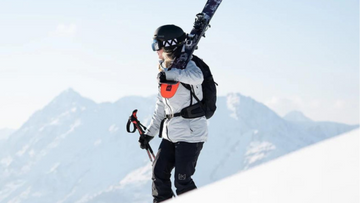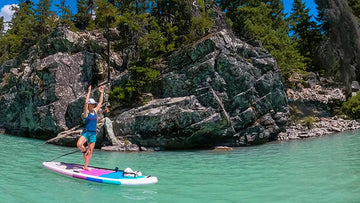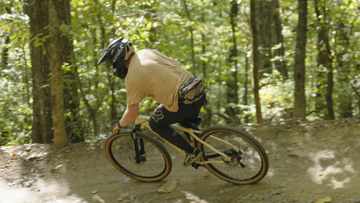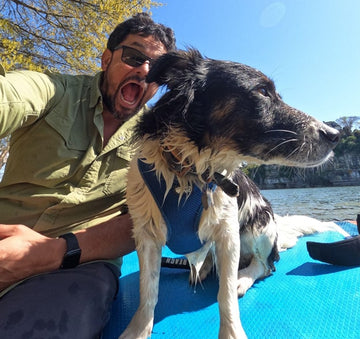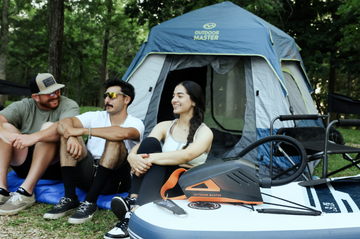So you love Stand Up Paddleboarding (SUP), but you also get lonely without your favorite four legged furry friend.
Can you bring them with you? Is it even safe? How do you begin to prepare for something like that? DON'T WORRY, we have some helpful tips and tricks for you to use before you and your “best friend” hit the high seas!
Just keep reading below and remember to follow our Facebook Group where I help mentor new paddlers. It's a great place to ask anything SUP related!

How to Paddleboard With Your Dog?
So how do you go about paddling with your canine pal? There are several great methods to use and tips to follow to make your first on water experience a successful one.
For starters we will talk about what equipment you should consider getting. Then how to introduce that gear to the dog successfully. After that it's time to get them onto the board itself and learn how to comfortably be in control of the situation at all times.
Does My Dog Really Need a Lifejacket?
YES, your dog needs a properly fitting life jacket and that is not the only piece of equipment you should be looking at to take your dog paddling with you. For starters the life jacket provides you and the dog an extra layer of protection should something extreme happen limiting your ability to rescue the water bound pup. In my opinion life jackets serve 3 main purposes,
- First, they provide additional buoyancy for the dog so they don't become as tired as fast from swimming.
- Second, the good life jackets are all set up with various features such as a “grab handle” making retrieving your dog a much easier process than choking them up by the collar. They also typically have pockets, pouches, and strap points for treats, dog bags, and other canine necessities.
- Finally, they should be very visible making it much easier to spot your pup should you become separated. I know, the one with the little shark fin is cute, but ask yourself how easy that would be to see if you got separated from your dog for any reason on the water.

Photo by Chris
What Equipment Should I Have?
Great, your dog is set up for success but what about you? Beyond the basics; PFD, Whistle, and Leash (for you not the dog!), what else is there out there to make paddling with your pup easier?
I like to think that my board choice is very important when deciding to take a passenger with me, be it human, dog, or large cooler. The board you choose should have PLENTY of stability for your weight plus the added weight of your pet/child/cooler. Look for boards that also have a full or nearly full deck pad.
This makes it easier for 4 furry paws to grip and reduces the chances of accidental swims. I also like boards that have multiple tie down options such as bungee cords, D-rings, or molly loops. This allows you to really secure things so they don't move around while you, and your dog, move around.
How to Get My Dog on The Paddle Board?

Photo by Chris
Ok, we have the dog setup, you are all geared for success, no what? Well, as any dog trainer will tell you every single dog is different (kinda like us humans). Don't expect your dog to master these skills right away and remember to have patience and a pocket FULL of treats at the ready.
Your first step will be getting the dog comfortable in their life vest. That is fairly simple as you can put it on them for varying intervals while around the house. Once they are used to it we recommend bringing out your SUP and introducing it to them.
Don't immediately require them to hop aboard but rather reward their natural curiosity. After this you will want to start training your dog to willingly get on the SUP. If you've ever had to move a stubborn dog you know, launching a paddleboard is not the time to be fighting about where to go with your puppy.
Once on the SUP I have found that the most useful commands to teach are SIT, LAY DOWN, and STAY. Like humans on paddleboards, the closer our mass is to the deck of the board the more stable it and we become. Having your dog able to sit and lay down on command is VERY helpful.
Finally the STAY command is good for when you need to focus on your paddling and not interacting with the dog. Get them in a comfortable seated or lying position and then have them stay until you finish navigating successfully.
Captaining Your Vessel for Success
Now that you have the basics down let's talk about some paddle techniques and theories that will be beneficial to you (dog or not). For starters let's discuss your perceived ability and the conditions at hand.
Would you feel comfortable paddling in the standing position the whole time (without having a dog)? That's typically the baseline I use for taking my puppy with me. Don't overextend yourself, especially if you have additional passengers on board. If it is rough, do you have confidence in your abilities to retrieve your dog and still make it to your destination or the starting point safely?
Sometimes rough water shouldn't be the biggest deterrent, for instance we take our dogs to the various Florida sand bars. Getting to the sand bar can be quite tricky sometimes. But it usually isn't a long trip and we are sure to plan our path with the utmost safety in mind.
Finally, do you have all the necessary equipment to save yourself in case of an emergency? It's important to have and practice using all of the safety gear in your possession.
What about the dog you say? Good question, like they say on the airplane tutorial, you have to help yourself first before you can help others. The same goes for paddling boarding with your dog.

Photo by Chris
Additional Tips and Tricks
So we have discussed a lot. What your dog needs, what you need, how to prepare your dog, and how to prepare yourself. Is there anything else? Always. Here are some additional tips we have learned that might just help you out:
- DO NOT leash your dog to the board. As the captain of your vessel you should be the only one leashed and here is why. If you are both leashed you create a tripping, tangling, and choking hazard for you and the dog. If only your dog is leashed and you fall in you may very well be separated from your board permanently. By having yourself leashed only allows you to fall in, recover your board and then recover your pup.
- Treats get wet. We recommend that after you have built up your dog's comfort with the SUP on land that you switch to rawhides or chew toys they are only allowed to have while paddling. This not only keeps them actively engaged with something in the seated position but it prevents soggy treats all over you, your dog, and your board.
- ALWAYS bring water. Dogs can't self regulate their heat like a human being. Aside from tossing them in you will need something else to be able to cool them off.
We hope that this has given you some useful information about paddling with your dog. If you have any comments or think we missed anything please let us know in the Facebook Group. We love answering questions and talking about all things Stand Up Paddleboard related! We can't wait to see you and your furry friends on the water, until then Mahalo my friends and always remember to enjoy the ride!


